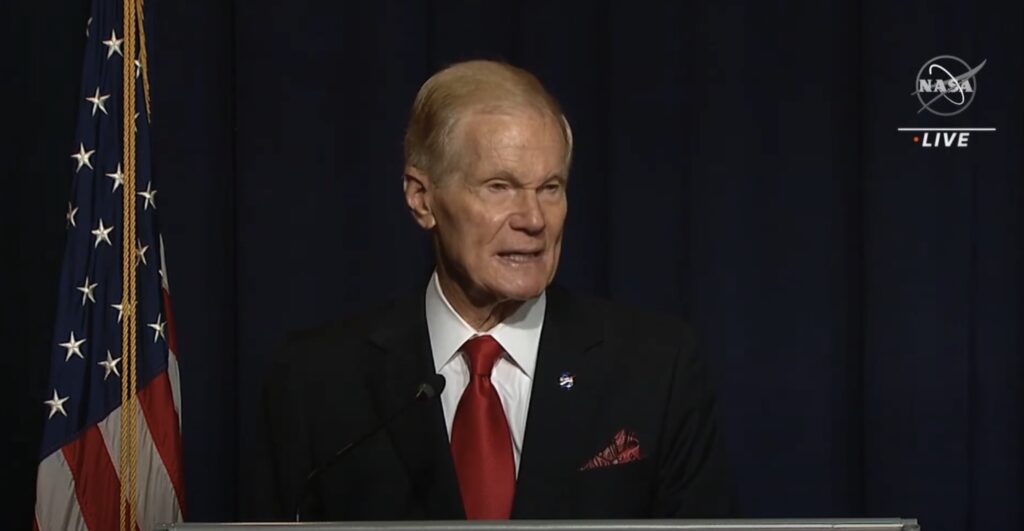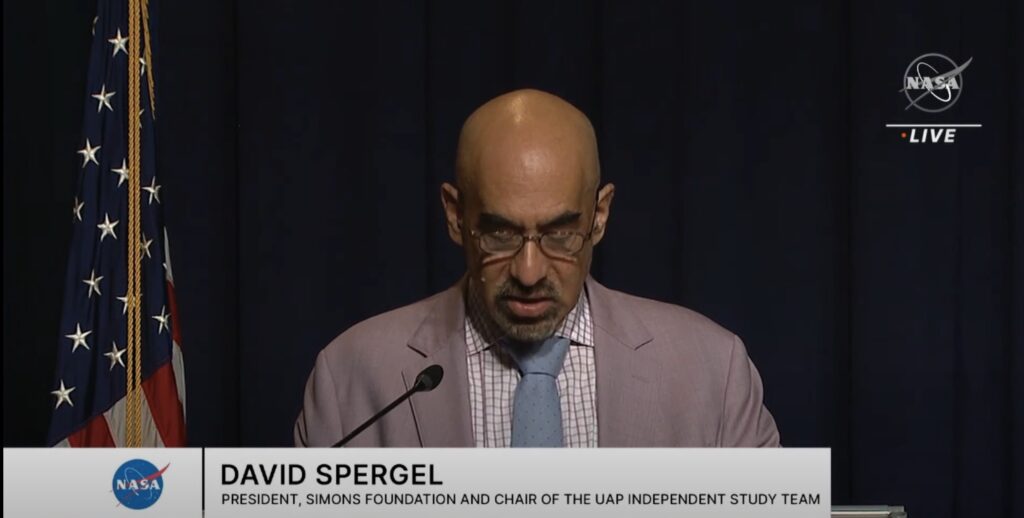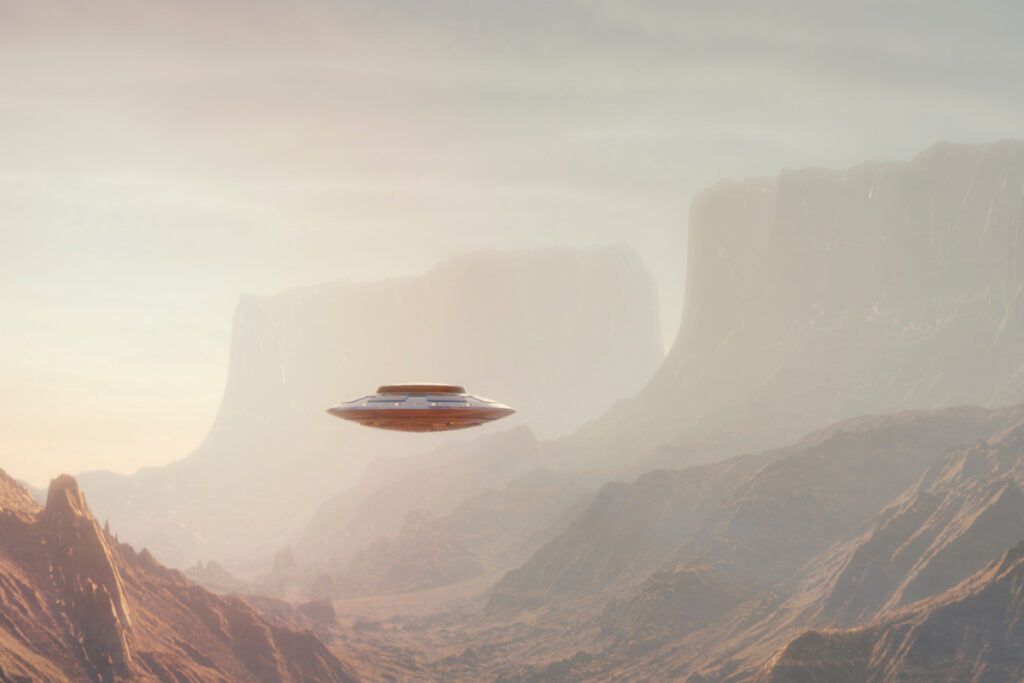After NASA’s UAP press conference last week, UFO enthusiasts have had a few points of contention. One revolves around why NASA is so insistent that the anomalous UAP sightings aren’t extraterrestrial, while simultaneously admitting that they have no idea what some of the UAPs are. The answer might lie in NASA’s UAP Independent Study Report, which reveals that referring to anything as extraterrestrial should be a “hypothesis of last resort.”
The independent study report (which you can read later in this article) was released just about two months after UFO whistleblower David Grusch testified to the House Oversight Committee about his allegations that the U.S. has a secret reverse-engineering UAP retrieval program.
The House Oversight Committee is hosting a full committee member briefing of NASA’s UAP study on Thursday, September 21, at 9 a.m. Eastern. We’ll be reporting on that meeting and any major reveals, but at the moment it looks like the meeting won’t be open to the press.
To review a comprehensive, in-depth breakdown of all of UFO whistleblower David Grusch’s claims, with citations, see our story here.
NASA Says It Doesn’t Know What Some of the UAPs Are, While Insisting They Aren’t Extraterrestrial
About eight minutes into NASA’s recent UAP press conference, Bill Nelson, NASA administrator, announced that NASA had no evidence the UAPs were extraterrestrial.

He said: “The top takeaway from the study is that there is a lot more to learn. The NASA independent study team did not find any evidence that UAPs have an extraterrestrial origin, but we don’t know what these UAPs are.”
After that statement, he announced that NASA has appointed a Director of UAP Research to look into the phenomena in-depth. You can watch the full press briefing in the video below.
At about 18 minutes in to the briefing, David Spergel, Chair of NASA’s independent study team, reiterated Nelson’s statement.

“It is essential to clarify based on our current findings and methodologies, that we find no evidence to suggest that UAP are extraterrestrial in origin,” Spergel said. “Our focus in understanding the phenomenon, over regardless of the source, and previous work from the AARO has shown that most events are explainable as planes, balloons, drones, weather phenomena, and instrument features. And in any search for interesting anomalies the first step is to eliminate the chaff of conventional events before moving on to identify novel phenomena.”
But not everyone was satisfied with this response.
UFO documentarian James Fox held NASA’s feet to the fire during the briefing. He asked Nelson how, if they don’t know what the UAPs are, can they assert so definitively that they aren’t extraterrestrial.
Q&A time! First up is James Fox. How can we know it’s not ET if we don’t know what it is? What about disclosure plans?
Bill Nelson: “We don’t know what these UAP are.” Emphasized also, though, that no evidence of extraterrestrial.
Said there’s concern about secret programs… pic.twitter.com/trI3IEFlam
— Post Apocalyptic (@PostApocalypt) September 14, 2023
Nelson didn’t have a clear answer to this justifiable question.
He replied, at about 21 minutes into the video: “Let me repeat what I said. I think it’s important that you hear this word for word. The NASA independent study team did not find any evidence that UAP have an extraterrestrial origin. But we don’t know what these UAP are. The mission of NASA is to find out the unknown. I’ve said several times in my comments here today that we, NASA, deal openly and we will be transparent on this. And we’re trying to address the question of, there was so much concern that there’s something locked up, classified, and that the American government is not being open. Well we are the American government and we are open and we’re going to be open about this… Again I’m going to repeat that statement, but we don’t know what these UAP are. But we’re gonna try to find out.”
When asked if NASA would go public if they determine that UAPS are non-human, Nelson insisted they would.
“If we are what I said we intend to be, which is transparent, you bet your boots we will say that,” Nelson answered. “And I’ve tried to set the table for you by telling you what I personally believe in: a universe that is so vast. That could there be a replication of life on Earth elsewhere in another solar system that is so big? Of course I believe that.”
NASA’s Study Says ‘Extraterrestrial’ Should be a ‘Hypothesis of Last Resort’
The clue about why NASA is avoiding the “extraterrestrial” terminology can be found in the UAP Independent Study Team report that it just released in September 2023. You can read the full report in the embed below.
NASA’s Unidentified Ano… by Stephanie Dube Dwilson
The first reference to “extaterrestrial” can be found on page 25, when the NASA independent study team writes (emphasis ours):
Science is a process that reveals reality rather than sculpts it—no matter how unsatisfying or confusing that reality might be. That includes the question of whether UAP have an extraterrestrial origin. There is an intellectual continuum between hypothesizing that faraway extraterrestrial civilizations might produce detectable technologies, and looking for those technologies closer to home. But in the search for life beyond Earth, extraterrestrial life itself must be the hypothesis of last resort—the answer we turn to only after ruling out all other possibilities. As Sherlock Holmes said, ‘Once you eliminate the impossible, whatever remains, no matter how improbable, must be the truth.’
So based on the independent study team’s own assertion, they will not even hypothesize about extraterrestrial life until they’ve clearly ruled out all other possibilities.
It’s worth reading that one sentence again: “extraterrestrial life itself must be the hypothesis of last resort—the answer we turn to only after ruling out all other possibilities.”
This could explain, at least to some degree, why NASA is so insistent that the UAPs show no signs of extraterrestrial life, while simultaneously admitting that they have no idea what the UAPs are. However, it would make more logical sense to simply say, “We don’t know what they are, so we can’t say if they show signs of extraterrestrial involvement or not.”
Also on page 25, the UAP study notes:
To date, in the peer-reviewed scientific literature, there is no conclusive evidence suggesting an extraterrestrial origin for UAP. When it comes to UAP, the challenge we have is that the data needed to explain these anomalous sightings often do not exist; this includes eyewitness reports, which on their own can be interesting and compelling, but aren’t reproducible and usually lack the information needed to make any definitive conclusions about a phenomenon’s provenance.
On page 33, the study ends by noting:
At this point there is no reason to conclude that existing UAP reports have an extraterrestrial source. However, if we acknowledge that as one possibility, then those objects must have traveled through our solar system to get here. Just as the galaxy does not stop at the outskirts of the solar system, the solar system also includes Earth and its environs. Thus, there is an intellectual continuum between extrasolar technosignatures, solar system SETI, and potential unknown alien technology operating in Earth’s atmosphere.
So it seems that by the end, NASA backhandedly acknowledges there’s still a chance the UAP might have an alien origin, and their research into technosignatures might help ferret some of that out.
It’s also worth noting that David Grusch and others have insisted on calling the beings behind the allegedly retrieved UAPs a “non-human intelligence” rather than extraterrestrial, because they don’t know if the beings are terrestrial or, perhaps, interdimensional or something else instead.
This work by Stephanie Dwilson is licensed under CC BY-ND 4.0. Please note that this license does not include photos or videos that may be in the story.

